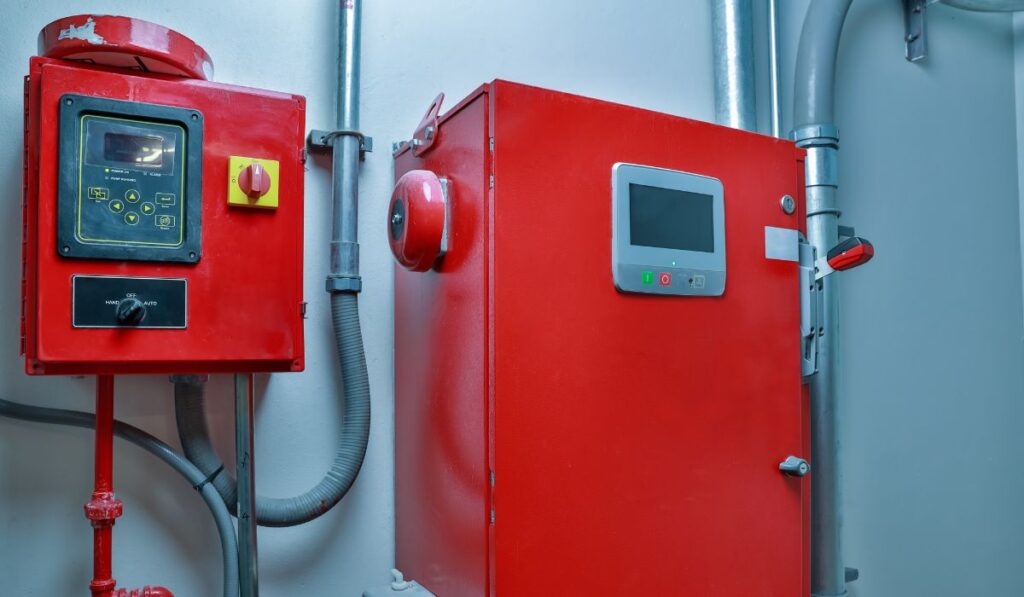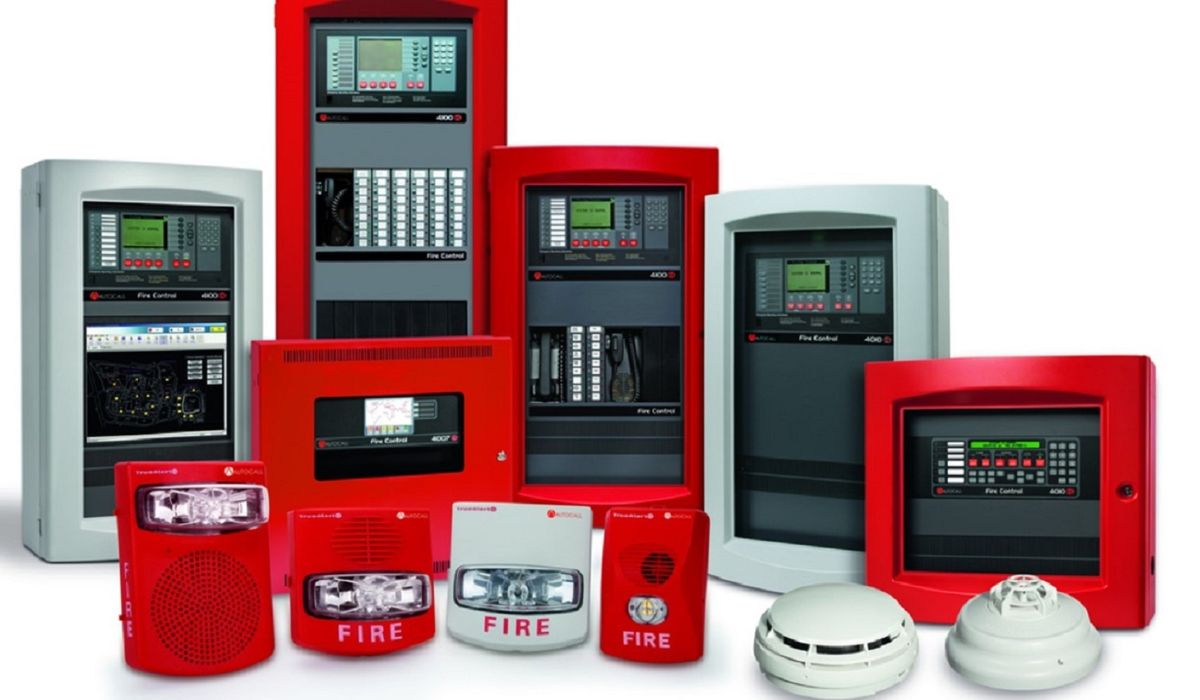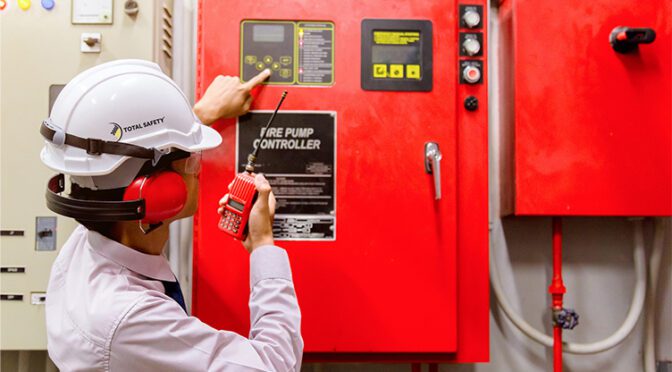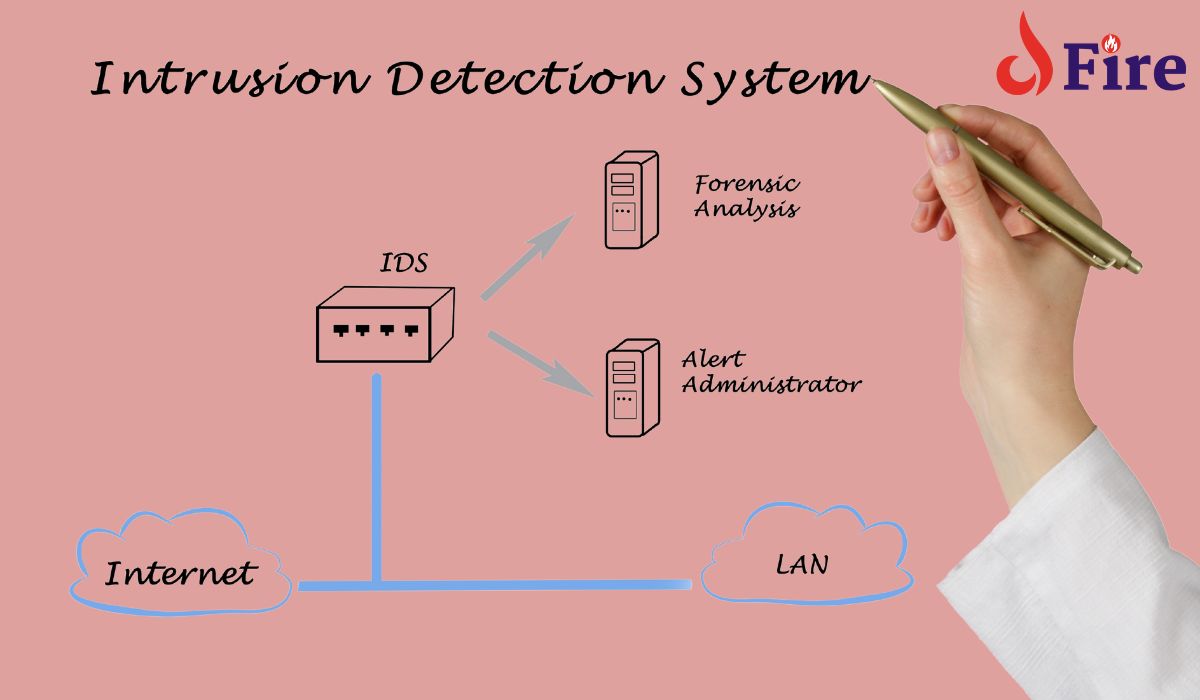Fire detection systems are essential for early warning of fire incidents. They safeguard lives and property by alerting occupants and authorities.
Fire detection systems play a pivotal role in safety and emergency preparedness, serving both residential and commercial buildings. By detecting heat, smoke, or flames, these systems trigger alarms that initiate evacuation and enable quick emergency response. Equipped with advanced sensors and technology, modern systems offer enhanced accuracy and faster detection, reducing false alarms and increasing reliability.
They often integrate with building management systems to provide a comprehensive approach to fire safety. Optimal placement and regular maintenance are crucial for the functionality of these fire detectors. Choosing the right type of fire detection system—be it ionization, photoelectric, or dual-sensor detectors—can make the difference between a minor incident and a catastrophic event.

The Evolution Of Fire Detection
Fire detection systems have come a long way. They began as simple, rudimentary tools and have evolved into sophisticated networks capable of pinpointing fire location and severity swiftly. Understanding this evolution is vital to appreciating today’s advanced systems.
From Smoke Signals To Sensors
Imagine a time before electronics when detecting a fire meant relying on the human senses. The sight of flames or the smell of smoke was our only warning. This all changed with the advent of technology.
- Manual systems gave way to automatic solutions.
- Smoke detectors now use ionization and photoelectric technologies.
- Heat detectors can sense rapid temperature changes.
- Intelligent sensors can distinguish between harmless conditions and real threats.
Technological Milestones In Fire Safety
| Year | Milestone | Impact |
|---|---|---|
| 1902 | First Sprinkler System | Automated fire suppression |
| 1930s | Smoke Detectors Introduction | Earliest form of automatic fire detection |
| 1960s | Affordable Home Smoke Alarms | Mass adoption for home safety |
| 2000s | Smart Sensors | Connectivity and remote monitoring |
The story of fire detection is not only about inventions but also about making them accessible to protect more lives. Smart detectors today are part of integrated systems, continuously analyzing data to manage risks and respond to emergencies effectively.
Anatomy Of Modern Fire Detection Systems

Welcome to the fascinating world of fire detection. Protecting lives and properties, modern fire detection systems are engineered marvels. These systems are complex, with various components. It’s crucial to understand these parts. Let’s dive into the anatomy of modern fire detection systems.
Core Components
Every fire detection system includes several key elements.
- Control Panel: This acts as the system’s brain. It monitors signals from sensors.
- Sensors and Detectors: These are the eyes, detecting smoke, heat, and flames.
- Alarms: When danger is detected, alarms sound loudly to alert occupants.
- Manual Call Points: People can use these to trigger the alarm manually.
- Communication Interfaces: They ensure the system connects with emergency services.
How Sensors Identify Different Types Of Fires
Different sensors detect various fire indicators.
| Sensor Type | Detection Method | Fire Type |
|---|---|---|
| Smoke Detectors | Uses ionization or photoelectric technology | Smoldering fires or open flames |
| Heat Detectors | Responds to temperature changes | High heat fires |
| Flame Detectors | Senses infrared or ultraviolet light | Fast-burning fires with flames |
| Gas Detectors | Detects combustible gases | Fires starting from gas leaks |
These sensors work together for optimal safety. Some environments require specific sensors. For instance, kitchens often use heat detectors. This is because smoke detectors could mistake cooking smoke for a fire. Data from these sensors help the control panel judge the fire’s type and respond accordingly.
Smart Integration In Fire Safety
The evolution of fire safety technology marks a significant leap forward with ‘Smart Integration in Fire Safety.’ This approach fuses cutting-edge technology and interconnected systems. The aim is to enhance protection against fire hazards. Smart solutions link various devices and allow them to communicate. This creates a robust, responsive, and effective fire detection network.
Interconnected Alarms And Iot
In the age of the Internet of Things (IoT), fire alarms have become smarter. Interconnected alarms offer a new level of safety and convenience. When one alarm triggers, all connected devices across the premises alert simultaneously. This ensures that everyone in the building is aware of the danger, no matter where they are.
- Prompt evacuation is possible due to the instant alert across all devices.
- Integration with smartphone apps provides immediate notifications wherever you are.
- Scalable systems mean adding more alarms and sensors as needed is simple.
Remote Monitoring And Control
Remote monitoring and control take fire safety to new heights. These systems allow users to monitor their property from any location. Through an app or web interface, users can view the status of sensors and alarms. Control options let users manage system settings or even silence false alarms on-the-go.
- Real-time alerts and updates keep property owners informed.
- Automatic notifications to emergency services can save precious time.
- Historical data offers insights into incident patterns and potential risks.
Types Of Fire Detectors And Alarms

Understanding different fire detectors and alarms is crucial for safety. Various technologies can spot a fire early. This helps prevent harm. Each detector has a unique way of sensing fire. Choose the right type for your space.
Photoelectric Vs. Ionization
Photoelectric detectors are best for slow, smoldering fires. These use light to sense smoke. When smoke enters the chamber, it scatters the light. This triggers the alarm.
Ionization detectors react to fast flames. These have a small amount of radioactive material. It ionizes the air and creates a current. Smoke disrupts the current and sounds the alarm.
Choosing between photoelectric and ionization depends on the area’s risk.
Heat Detectors
- Fixed Temperature: These trigger when a temperature limit is reached.
- Rate-of-Rise: These detect rapid temperature increases.
Heat detectors are less sensitive than smoke detectors. They’re good in dusty, steamy, or smoky spaces where smoke alarms might false trigger.
Aspirating Smoke Detectors
Aspirating Smoke Detectors (ASD) actively pull in air. They sample it for the smallest smoke particles. ASDs provide an early warning. They’re suitable for sensitive areas where early detection is vital.
ASDs are less likely to false alarm. This makes them reliable in critical spaces like data centers.
The Role Of Artificial Intelligence
Artificial Intelligence (AI) is changing fire safety. Traditional fire systems just respond. AI predicts and learns. It makes systems smarter and faster. This saves more lives and property. Let’s explore two ways AI is revolutionizing fire detection.
Predictive Analysis For Fire Prevention
AI does something amazing. It can predict fires before they happen. How? By analyzing lots of data. It looks at past fires. It understands risks in different buildings. Here’s why it’s great:
- Minimizes risk: Prevents fires from starting.
- Custom solutions: Creates fire safety plans just for your place.
- Always improving: Learns from new data to get better all the time.
Ai In Smoke And Pattern Detection
AI is not just about prediction. It also spots danger fast. In smoke and pattern detection, AI shines. It sees patterns we miss. Here’s what makes it stand out:
| Feature | Benefit |
|---|---|
| Smart Smoke Detection | Quick alerts, less damage. |
| Visual Pattern Recognition | Sees fire signs early, more safety. |
These AI advancements mean better protection. They make sure help arrives fast. They keep us all safer. AI is really changing fire detection systems. And it is for the better!
Current Standards And Regulations
Current Standards and Regulations play a crucial role in fire safety. Buildings must adhere to strict codes for fire detection systems. These codes ensure that detection systems work during emergencies. Let’s explore the major standards.
International Fire Code Compliance
International Fire Code (IFC) sets global benchmarks for fire safety. All fire detection systems must align with IFC. The code specifies system design, installation, and performance. It requires systems to detect smoke and fire early. This gives people time to evacuate safely.
- Early Detection: Devices to sense fire quickly
- Installation Standards: Professional setup as per code
- Emergency Routes: Clear paths for quick exit
Regular Maintenance And Certification
Regular maintenance is key for fire detection systems. Maintenance ensures systems function properly. Certified technicians should inspect systems regularly. They should test and certify equipment’s readiness.
| Checklist Item | Frequency |
|---|---|
| Sensor Testing | Monthly |
| Battery Check | Quarterly |
| Full System Inspection | Annually |
Maintenance must follow a routine. This ensures no detail is missed. A well-kept log of such activities is also important. It proves compliance during inspections.
Challenges In Fire Detection Technology
Fire detection systems play a crucial role in protecting lives and property. However, they face challenges that can impact their effectiveness. Understanding these challenges allows for improvements and innovations in fire detection technology. Let’s explore some of the main difficulties these systems must overcome.
False Alarm Reduction
False alarms not only cause unnecessary panic but also waste resources. The key to reducing false alarms lies in enhancing the accuracy of fire detectors. Current efforts include:
- Developing more sophisticated algorithms to differentiate between real threats and benign triggers.
- Upgrading sensor technology to minimize sensitivity to non-fire related phenomena.
- Integrating AI to learn from false alarm patterns and prevent future occurrences.
Adaptation To Varying Environments
Fire detection systems must operate reliably across diverse environmental conditions. To ensure consistent performance, manufacturers focus on:
- Customizing sensors for different locations, such as homes, factories, or forests.
- Enhancing system robustness to withstand extreme temperatures and humidity.
- Implementing smart technology that adjusts sensitivity based on environmental data.
Emerging Trends And Future Outlook
The landscape of fire detection systems is rapidly changing. Innovations aim to make systems more efficient, reliable and user-friendly. Let’s explore what the future holds for this critical industry.
Wireless Systems And Battery Life
Wireless technology revolutionizes how we protect our spaces from fire hazards. The trend is towards systems that require no complex wiring, allowing easy installation and flexibility. A key benefit of wireless systems is less invasive maintenance. With longer battery lives, the need for frequent checks and replacements diminishes, providing peace of mind and safety.
- Extended battery life: Newer sensors last longer, reducing costs.
- Enhanced connectivity: Systems link seamlessly with smartphones and tablets.
- Flexibility in placement: Sensors can be placed without worrying about wiring constraints.
Innovations On The Horizon
Tomorrow’s fire detection systems are about proactive prevention. Scientists are developing technologies that predict and mitigate fire incidents before they escalate. This new direction could include:
| Innovation | Description | Impact |
|---|---|---|
| AI Integration | Systems that learn from environments. | Precise detection and fewer false alarms. |
| Smart Building Compatibility | Systems talk to other smart devices. | Unified safety protocols for buildings. |
| Environmental Adaptability | Sensors adjust to various conditions. | Reliable performance in any setting. |
Thus, the future not only leans on reducing risks but also on integrating with the smart tech ecosystem for a safer tomorrow.
Selecting The Right System For Your Needs
Imagine a system that stands guard, ready to alert you at the first whisper of a fire. Selecting the perfect fire detection system is crucial in ensuring safety and preparedness. Here’s how to pick one that fits your specific needs.
Assessing Risk And Environment
Different spaces pose different challenges and risks when it comes to fire safety. Identify the hazards in your area before choosing a fire detection system. Consider factors such as building size, occupancy, and materials stored within.
- Industrial spaces often require more sophisticated systems due to the presence of flammable chemicals.
- Residential areas benefit from simpler, user-friendly systems.
Research the fire codes specific to your location and industry. Adherence to these codes is non-negotiable for the safety of all occupants.
Cost-benefit Analysis
Investing in a fire detection system is investing in safety, but it must also fit your budget. Conducting a cost-benefit analysis is a smart way to ensure you’re making an informed decision.
| Cost Factors | Benefits |
|---|---|
|
|
Compare the ongoing maintenance costs against the system’s reliability and warranty. Choose a system offering long-term value over one that is cheaper upfront but could fail when you need it most.
Impact On Emergency Response
The inclusion of advanced fire detection systems drastically changes how emergencies are handled. These systems play a crucial role in alerting authorities and occupants. Quick response times can significantly reduce the damage. Let’s explore how fire detection systems can save lives by speeding up emergency responses.
Speeding Up Fire Brigade Arrival
Modern fire detection systems ensure the fastest possible alert to fire brigades. This rapid notification is vital. It helps to minimize the fire’s spread and potential destruction. Here’s how these systems make a difference:
- Instant Alerts: Upon detecting fire or smoke, systems send out automatic signals.
- Direct Communication: Some systems connect directly with the nearest fire station, enabling swift action.
- Real-Time Updates: Continuous monitoring provides ongoing information, helping responders prepare en route.
Facilitating Evacuation Procedures
Ensuring the safety of people is paramount during a fire. A well-designed fire detection system supports a smooth evacuation. It guides occupants to safety effectively. Here are features that assist with evacuation:
| Feature | Description |
|---|---|
| Automated Voice Alarms | Clear instructions through speakers help to guide people out. |
| Emergency Lighting | Lights mark the path to exits, even in dense smoke. |
| Clear Signage | Visible signs direct to the nearest exits, easing panic. |
Audit trails also track which areas have been evacuated, informing rescue teams.
Case Studies: Success Stories And Failures
Fire detection systems stand as pivotal elements in safeguarding lives and property. This blog delves into critical instances where these systems played decisive roles. Explore real-world applications and the distinctive outcomes they produced.
Analysis Of Real-life Incidents
Real-life incidents offer invaluable insights into fire detection effectiveness. Examining these events reveals how systems succeed or fail in various settings. Consider the success story of a downtown hotel. Its state-of-the-art fire detection system identified a fire swiftly, alerting occupants and emergency services in time to prevent casualties and minimize damage.
In contrast, a failure example comes from a manufacturing plant where outdated detectors failed to sense a fire’s onset. The delayed reaction resulted in extensive property loss and production downtime.
| Location | System Type | Outcome |
|---|---|---|
| Downtown Hotel | Advanced Multi-Sensor | Successful early detection |
| Manufacturing Plant | Outdated Single-Sensor | Delayed response, significant loss |
Lessons Learned And Applied Changes
- Implement routine system upgrades and maintenance.
- Adopt multi-sensor technology for quicker detection.
- Conduct regular fire drills and staff training.
Post-incident evaluations prove essential in refining fire response protocols. Lessons from successes and failures alike guide enhancements in fire safety practices to mitigate risks in the future.
Businesses and facilities have incorporated transformative measures based on these lessons. They now place greater emphasis on cutting-edge technologies and rigorous staff preparedness.

Credit: www.totalsafety.com
Public Awareness And Education
Effective fire detection systems are a pivotal aspect of public safety.
Yet, their efficacy hinges on public awareness and education. People must understand the workings and importance of these systems. Moreover, community engagement in fire safety practices can significantly enhance emergency preparedness. Let’s explore how to bolster fire safety awareness through targeted efforts.
Promoting Fire Safety Practices
Spreading the word about fire safety is crucial. Simple measures can make a world of difference. Families should identify evacuation routes and regular check on smoke alarms. The use of social media and public service announcements can provide tips and convey fire safety messages effectively.
- Install smoke alarms on every floor.
- Test alarms monthly.
- Plan and practice escape routes.
- Never leave cooking unattended.
- Keep flammable materials away from heat sources.
Training And Workshops
Hands-on training empowers individuals to act swiftly and wisely during fires. Workshops facilitate the learning of fire extinguisher use, first aid, and evacuation procedures. Schools, workplaces, and community centers serve as ideal venues for these educational sessions.
- Interactive fire extinguisher training.
- First aid courses for burn injuries.
- Mock fire drills.
- Classes on smoke alarm maintenance.
Investing time in educating the community saves lives. The knowledge and skills gained from workshops can turn bystanders into lifesavers. Fire detection systems work best when paired with a well-informed public ready to respond to emergencies.
Frequently Asked Questions Of Fire Detection Systems
What Are The 4 Types Of Fire Detection Systems?
The four types of fire detection systems include heat detectors, smoke detectors, flame detectors, and gas detection systems. Each system identifies specific fire characteristics.
What Is The Fire Detection System?
A fire detection system identifies and notifies the presence of smoke, heat, or flames. It triggers alarms, enabling timely evacuation and firefighting actions.
What Are The 3 Main Types Of Fire Alarms?
The three main types of fire alarms are ionization, photoelectric, and combination alarms, each detecting different types of fires effectively.
What 3 Things Must A Fire Detection System Do?
A fire detection system must detect smoke or heat, initiate an alarm, and notify emergency services or building occupants.
Conclusion
Investing in a robust fire detection system is a vital step in safeguarding lives and property. Embrace advanced technologies for early warnings and stay ahead of potential disasters. Remember, the right system brings peace of mind and protection. Make safety your top priority today.

I’m Abdus Sobur, a highly skilled and professional Fire Safety Officer with a passion for safeguarding lives and property. Over the course of my career, I’ve conducted numerous successful fire safety audits, earning a reputation for excellence in ensuring public safety.
In addition to my role as a Fire Safety Officer, I’m also dedicated to raising awareness about the importance of fire safety. Through my blog, I share insights into the functions of different fire safety equipment, aiming to empower individuals with the knowledge they need to protect themselves and their communities.
I’m driven by a deep commitment to promoting fire safety awareness and preventing fire-related incidents.

